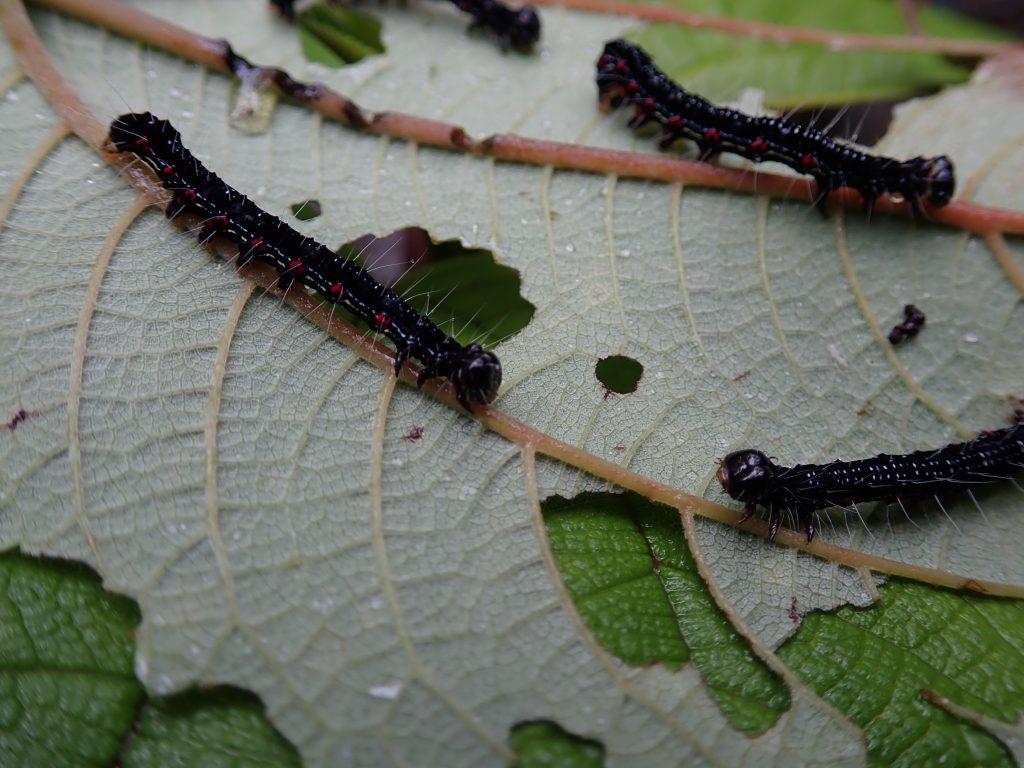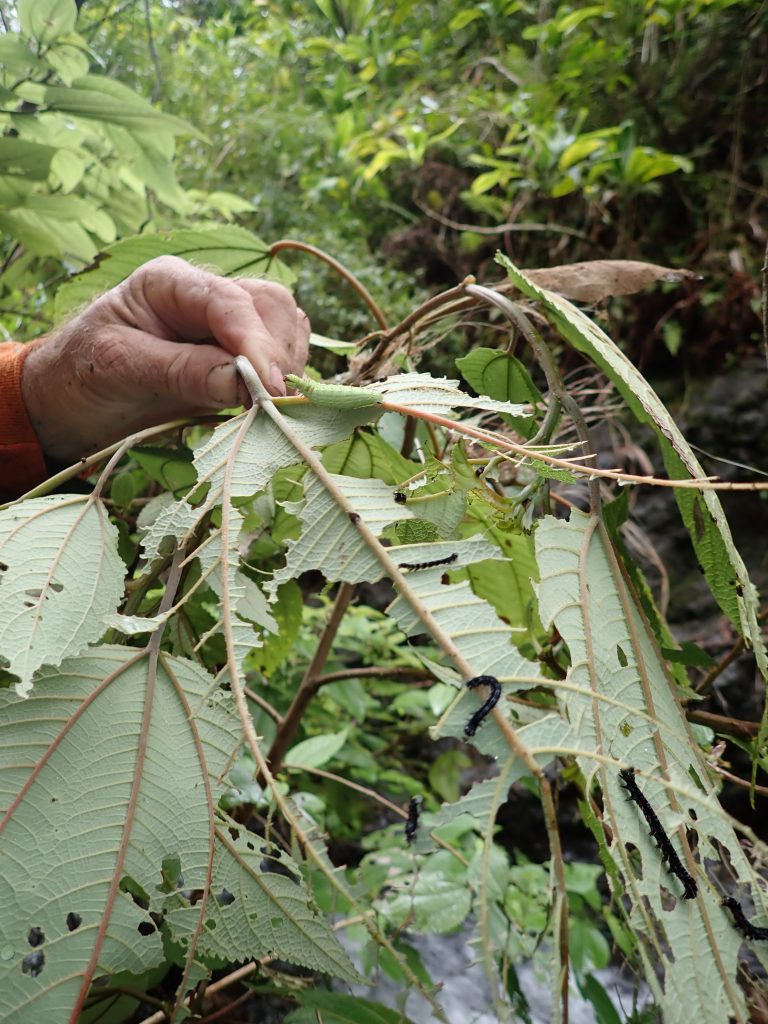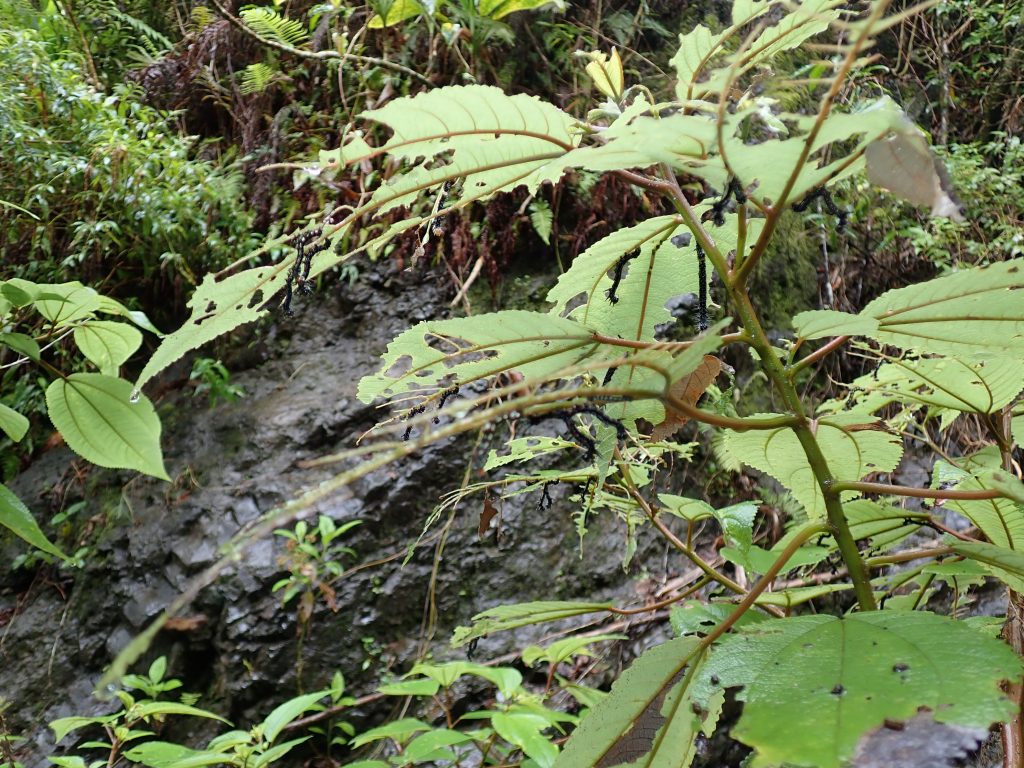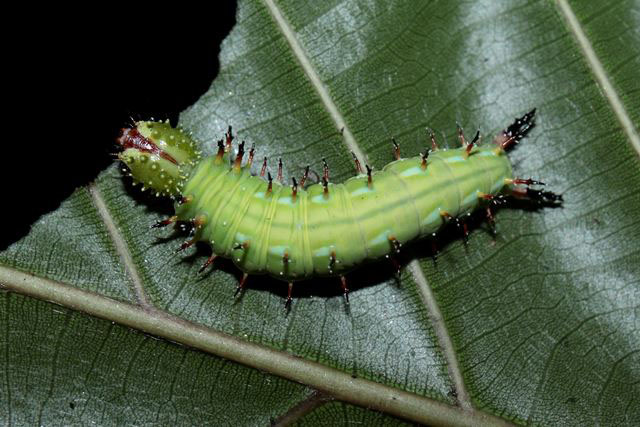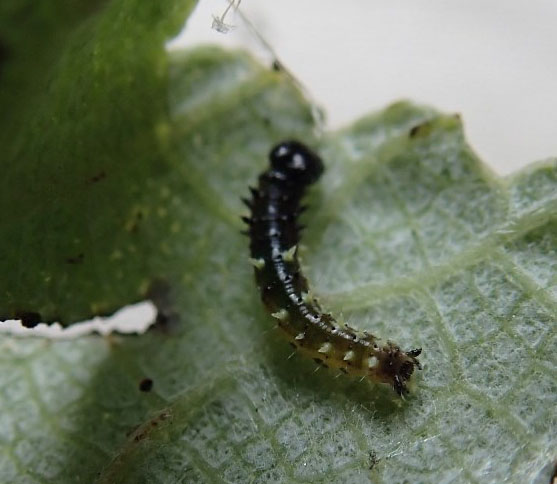Recently Introduced Moth Threatens Maui’s Native Plants & Watersheds
When a biologist who was looking for native snails noticed signs of caterpillars feeding on māmaki in Olowalu on Maui, he came across a new invasive species. It was a kind of caterpillar he had never seen before—the Arcte coerula (Ramie moth).
Hawai‘i has two native butterflies and many native moths, but Ramie moths are native to Southeast Asia. They have been spread by people to the Philippines, Japan, Australia, New Zealand and now, Maui. During the fall of 2018 was the first time it had been found anywhere in the US. After identifying it and conferring with colleagues, reports started coming in from across the island, from Olinda, ‘Ulupalakua to Waiehu, ‘Īao, Kahakuloa, Makawao and Ukumehame.
Keahi Bustamente, a Maui-based Pacific Cooperative Studies Unit invertebrate biologist working with the DLNR Division of Forestry and Wildlife (DOFAW), said this species is very different from the Kamehameha butterfly caterpillar.
“When its trying to scare off predators, this thing is fuzzy, colorful and rears up its head, and waves it around and it spits,” said Bustamente. “Kamehameha caterpillars don’t do that.”
Ramie caterpillars are black and sometimes yellow, with bright orange-red spots and white hairs. Kamehameha butterfly larvae are black when first hatched, and greenish when ready to make a cocoon.
The Ramie moth is laying its eggs on several plants in the Urticaceae family (nettles) such as māmaki and ‘akolea, which are food sources for the Kamehameha caterpillar and are culturally important because of their fiber and medicinal qualities.
“Māmaki and other plants in that family provide habitat for animals and other plants,” said Bustamente. “They are an important species in wet understories, they protect watersheds,”
Many of the 14 species in the māmaki family are endemic to Hawai‘i, found only here, and some are already critically endangered. This invasive moth can spread with the wind. How it was brought to Maui is unknown, but people could have transported its eggs on the leaves of an imported plant. That’s how it could potentially spread other islands.
When asked about potential control methods, Bustamente notes there are already native and introduced parasitic wasps in the wild. Introducing another might be problematic and requires much more research. For now, more information is needed, and everyone is encouraged to report new sightings.
To report any invasive species, call the statewide hotline, (808)-643-PEST, or go online.
Learn more about native Kamehameha butterflies here.
Sponsored Content
Comments






